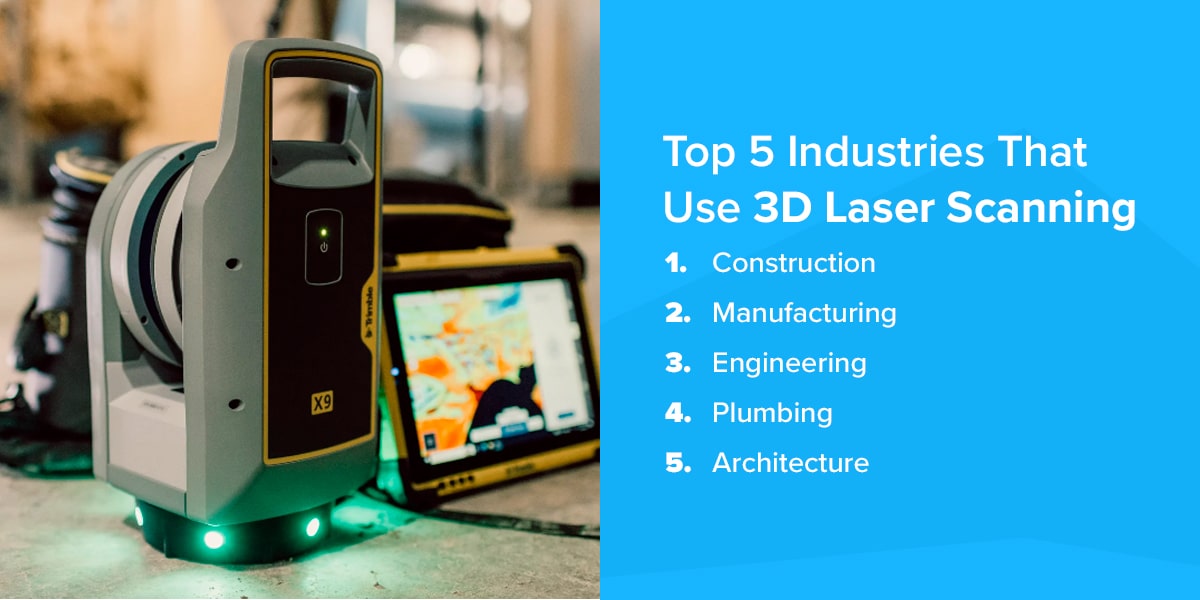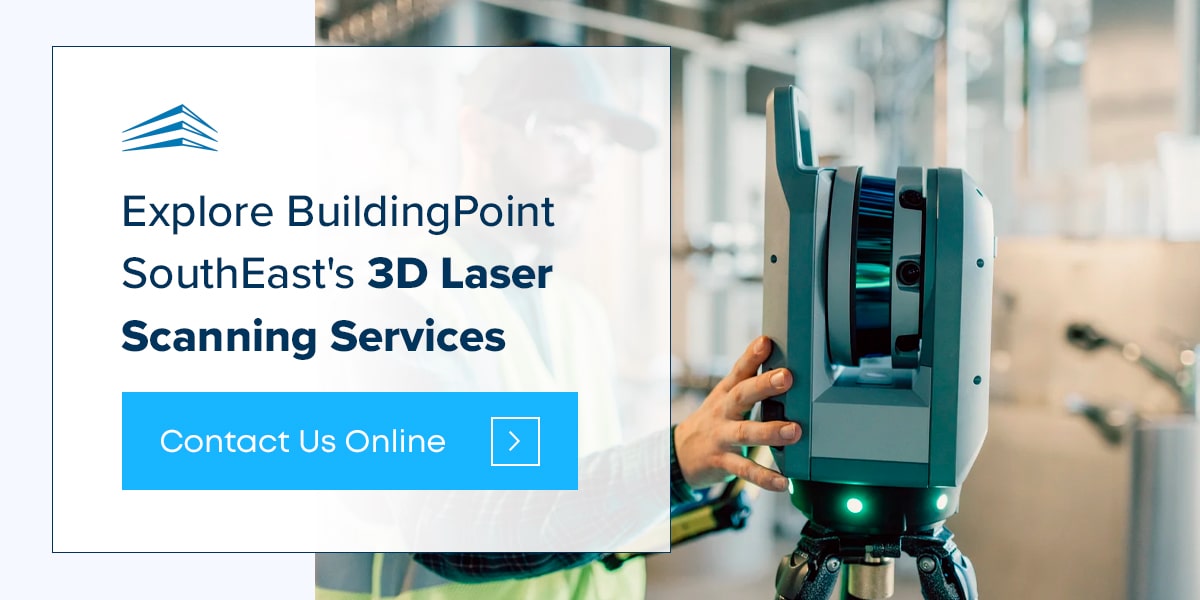Table of Contents:
- The Advantages of 3D Laser Scanning
- Top 5 Industries That Use 3D Laser Scanning
- Explore BuildingPoint SouthEast's 3D Laser Scanning Services
In today's tech-driven world, few innovations have made as significant an impact as 3D laser scanning. This technology combines precision with potential, becoming essential across various industries—from the detailed designs in architecture to the rugged realities of construction.
A 3D laser scanner captures minute details, creating a digital twin that mirrors the physical environment. Its applications are diverse and impactful, catering to the unique needs of industries such as MEP (mechanical, electrical, plumbing), engineering, and architecture.
Before we dive into the top industries utilizing 3D laser scanning, let’s first explore the many benefits this technology offers.
The Advantages of 3D Laser Scanning
3D laser scanning provides a competitive edge in numerous ways:
- Precision: Captures intricate details with exceptional accuracy.
- Efficiency: Streamlines processes, reduces manual labor, and expedites project timelines.
- Comprehensive Data: Generates detailed digital models for thorough analysis and planning.
- Minimized Errors: Reduces guesswork, which minimizes design and construction errors.
- Cost Savings: Enhances budgeting by reducing rework and material wastage.
- Innovation: Encourages creative exploration, enabling new design possibilities.
- User-Friendly: Designed for easy operation, empowering efficient scanning.
- Quick Setup: Rapid installation ensures minimal downtime and fast scanning initiation.
- Risk Mitigation: Identifies potential issues early, reducing risks during construction.
Now that you understand the advantages of laser scanning, let’s look at how the top industries use and benefit from this technology.

Top 5 Industries That Use 3D Laser Scanning
Why do sectors like construction, manufacturing, engineering, MEP, and architecture rely on laser scanning? Let's start learning!
1. Construction
3D laser scanning has become a cornerstone in construction due to its multifaceted advantages:
- Enhanced Project Management: Traditional methods often rely on manual measurements, leading to errors. A laser scanner can digitally capture an entire site, creating accurate models that streamline planning and design.
- Unparalleled Accuracy: Laser scanners measure complex structures down to the millimeter, ensuring every element aligns with the design.
- Efficient Documentation: Laser scanning generates comprehensive point cloud data, creating virtual representations of sites that are invaluable for assessing progress and discrepancies.
- Risk Mitigation: By improving communication among stakeholders, 3D laser scanning helps minimize design errors and project delays.
2. Manufacturing
In manufacturing, 3D laser scanning enhances quality control, product development, and operational efficiency:
- Quality Control and Inspection: Laser scanning captures detailed 3D representations, allowing for meticulous quality inspections.
- Reverse Engineering: It enables manufacturers to create digital models of physical objects, aiding in replicating complex geometries.
- Streamlined Product Development: Scanning prototypes allows for precise adjustments before physical modifications are made, saving time and resources.
- Custom Component Efficiency: Laser scanning captures accurate measurements for custom parts, ensuring they fit seamlessly into larger assemblies.
- Reduced Downtime: Implementing 3D laser scanning minimizes manual measurements and inspections, increasing operational efficiency.
3. Engineering
Engineers leverage 3D laser scanning to navigate complex challenges:
- Accelerated Analysis and Design: It captures intricate details at a rapid rate, providing a foundation for meticulous 2D and 3D models.
- Preemptive Issue Identification: Engineers can spot potential errors before they arise, minimizing costly setbacks.
- Off-Site Visualization: Remote exploration of detailed spaces allows for informed decisions without physical presence.
- Tighter Dimensions and Budget Adherence: Access to accurate data reduces clashes, keeping projects on track financially.
- Bridging Design and Reality: 3D laser scanning accurately represents existing conditions, enhancing project execution.
4. MEP
Laser scanning has transformed MEP practices:
- Accurate Site Assessments: These provide precise measurements of existing MEP systems, aiding informed decision-making.
- Retrofitting and Renovations: Detailed 3D models help identify areas for modifications that align with existing infrastructure.
- Eliminating Guesswork: Comprehensive data removes uncertainty in planning by accurately visualizing placements and obstacles.
- Simplified Complexity: Navigating intricate MEP systems becomes easier with digital models, enhancing system efficiency.
- Time and Cost Savings: Accurate measurements and streamlined planning lead to reduced timelines and material wastage.
5. Architecture
3D laser scanning revolutionizes architecture through accurate site documentation and design possibilities:
- Accurate Site Documentation: It provides a digital replica of structures, eliminating the need for manual measurements.
- Historical Preservation: Capturing precise architectural elements aids in restoration efforts.
- Enhanced Creativity: Architects can explore new design horizons, testing spatial relationships and innovating confidently.
Explore BuildingPoint SouthEast's 3D Laser Scanning Services
The adoption of 3D laser scanning has transformed industries, driving precision and efficiency. BuildingPoint SouthEast is at the forefront of this revolution, offering comprehensive 3D scanning solutions powered by Trimble.
Our tools—including the Trimble X9 Laser Scanner, along with Trimble RealWorks and FieldLink software—enhance your ability to create, analyze, and collaborate seamlessly.
Contact us online today to learn more about our 3D laser scanning services. We are proud to partner with you to elevate the impact of 3D laser scanning in your industry.





